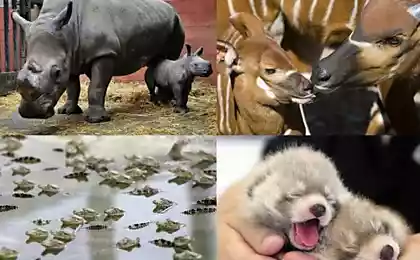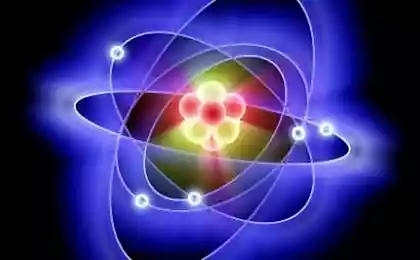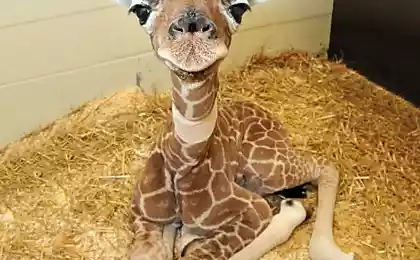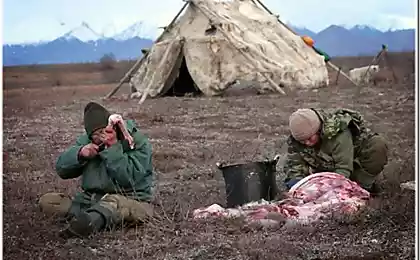178
In the German zoo was born a baby walrus
Recently, the famous German zoo Hagenbeck Zoo presented to the public a newborn baby walrus, born on June 15. The little walrus, who has not yet invented a name, has already managed to conquer visitors with his charming eyes and magnificent, lush mustache.
Photo: Hagenbeck Zoo
The cute cub is a small copy of her mother, a 17-year-old female named Dean, who does not neglect her child for a minute. According to the staff of the park, Dina everywhere with the cub – both on land and in the water, she closely monitors him.
“Dina is a beautiful and caring mother,” notes one caretaker. She does everything in her power to make the baby grow a healthy and active walrus. He has an excellent appetite and grows quickly - to the delight of his mother and the staff of the zoo.
Walrus (Latin Odobenus rosmarus) is a large marine mammal inhabiting the northern waters of the World Ocean. It belongs to the only modern species of the family of walruses (Latin Odobenidae). Its size is second only to the elephant seal that lives in the southern hemisphere.
Weight of some individuals can reach up to 2 tons, but usually walruses weigh up to 800 kilograms. For example, the mass of the Atlantic subspecies is 10-20% smaller than the Pacific. Males are three times larger than females in both Pacific and Atlantic walruses.
On land, walruses look bulky and clumsy, but in the water they are real virtuosos of movement. The body of the walrus is very large and massive. The head, compared to the huge body, seems a small growth. The limbs of the animal are flippers. The skin is wrinkled and thick (up to 10 cm).
Under the skin is a layer of fat, the thickness of which is about 15 cm. Body coloring varies with age: young animals have a dark brown or dark brown color, and old males become almost pink. In water at low temperature walruses can become almost white, this change occurs due to the narrowing of the blood vessels of the skin.
Interestingly, it is almost impossible to confuse a walrus with any other marine animal, since it has two large tusks (fangs) protruding from the mouth, and the upper lip is covered with mustaches (vibrissae), the length of which can be up to 12 cm. Tusks in males can forgive up to 80 cm in length!
Photo: Hagenbeck Zoo
Source: zoopicture.ru
Photo: Hagenbeck Zoo
The cute cub is a small copy of her mother, a 17-year-old female named Dean, who does not neglect her child for a minute. According to the staff of the park, Dina everywhere with the cub – both on land and in the water, she closely monitors him.
“Dina is a beautiful and caring mother,” notes one caretaker. She does everything in her power to make the baby grow a healthy and active walrus. He has an excellent appetite and grows quickly - to the delight of his mother and the staff of the zoo.
Walrus (Latin Odobenus rosmarus) is a large marine mammal inhabiting the northern waters of the World Ocean. It belongs to the only modern species of the family of walruses (Latin Odobenidae). Its size is second only to the elephant seal that lives in the southern hemisphere.
Weight of some individuals can reach up to 2 tons, but usually walruses weigh up to 800 kilograms. For example, the mass of the Atlantic subspecies is 10-20% smaller than the Pacific. Males are three times larger than females in both Pacific and Atlantic walruses.
On land, walruses look bulky and clumsy, but in the water they are real virtuosos of movement. The body of the walrus is very large and massive. The head, compared to the huge body, seems a small growth. The limbs of the animal are flippers. The skin is wrinkled and thick (up to 10 cm).
Under the skin is a layer of fat, the thickness of which is about 15 cm. Body coloring varies with age: young animals have a dark brown or dark brown color, and old males become almost pink. In water at low temperature walruses can become almost white, this change occurs due to the narrowing of the blood vessels of the skin.
Interestingly, it is almost impossible to confuse a walrus with any other marine animal, since it has two large tusks (fangs) protruding from the mouth, and the upper lip is covered with mustaches (vibrissae), the length of which can be up to 12 cm. Tusks in males can forgive up to 80 cm in length!
Photo: Hagenbeck Zoo
Source: zoopicture.ru


















